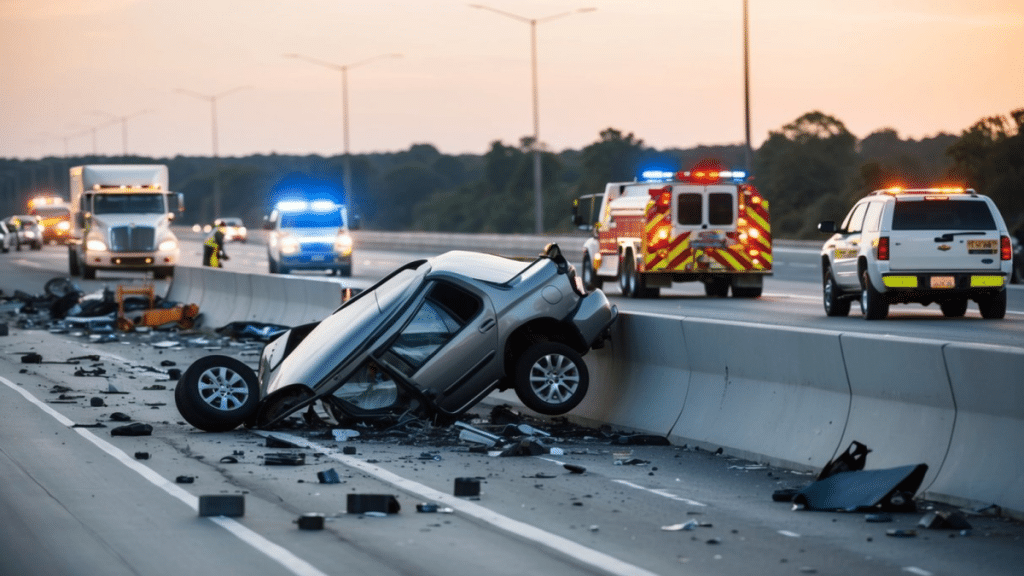Motor vehicle collisions are an unfortunate yet inevitable aspect of driving, and ascertaining liability is often a pivotal element in the resolution of claims and the pursuit of compensation. In the aftermath of a car accident, the determination of fault can significantly affect insurance claims, legal proceedings, and potential financial restitution. Establishing liability necessitates meticulous attention to detail, the systematic collection of evidence, and frequently, the engagement of legal expertise.
Understanding Liability in Motor Vehicle Collisions
Liability pertains to the individual or entity deemed responsible for precipitating the collision through negligent or reckless conduct. In numerous instances, the determination of liability is straightforward; however, in certain circumstances, it may involve a multifaceted analysis of various contributing factors.
Establishing Liability
Establishing liability in a motor vehicle collision necessitates the meticulous collection of evidence that elucidates the circumstances of the accident and identifies the responsible party.
Collecting Evidence at the Scene
The immediate aftermath of an accident is critical for evidence collection. If physically capable, it is imperative to gather comprehensive information. The following types of evidence are particularly instrumental in proving liability:
Photographs and Videos: Capture clear images and videos of the accident scene from multiple perspectives. Document the positioning of the vehicles, skid marks, road signs, weather conditions, and any visible damage to the vehicles. Photographs of any injuries sustained can also prove valuable.
Witness Statements: Witnesses can offer unbiased accounts of the incident. Obtain their contact information and, if feasible, request written or recorded statements detailing their observations.
Dash Cam Footage: Dash cam recordings from any involved parties can serve as robust evidence. This footage can corroborate the sequence of events leading up to the collision.
Traffic and Surveillance Cameras: Depending on the accident’s location, traffic or security cameras may have recorded the incident. Footage from nearby businesses or traffic management authorities can be requested if available.
Police Reports
A police report is often a pivotal piece of evidence in establishing fault. Upon arriving at the scene, law enforcement officers will evaluate the situation and generate an official report. This report may include the officer’s observations, statements from drivers or witnesses, and any noted traffic violations. While not conclusive in determining liability, police reports are highly credible and can be instrumental in insurance claims or legal proceedings.
Traffic Laws and Citations
One of the most compelling methods to establish fault is demonstrating that the other driver violated traffic laws. Citations for infractions such as running a red light, speeding, or failing to yield can serve as powerful evidence of liability.
Running a Red Light or Stop Sign: Violations of traffic signals are clear indicators of fault.
Speeding: If a driver was exceeding the speed limit, they might be held accountable for the accident, especially if there is evidence such as skid marks or witness testimony.
Distracted Driving: Evidence that a driver was texting, using their phone, or otherwise distracted can significantly influence fault determination.
Driving Under the Influence: Drivers found to be under the influence of drugs or alcohol are often deemed entirely or primarily at fault.
Engaging with Experts
In some instances, proving liability necessitates more than the evidence collected at the scene. Collaboration with professionals such as accident reconstruction experts and medical professionals can fortify your case.
Accident Reconstruction: In complex scenarios, accident reconstruction experts analyze evidence, including vehicle damage, skid marks, and traffic patterns, to recreate the accident and ascertain how it transpired. These experts apply scientific principles and data analysis to identify each driver’s actions and assign responsibility.
Medical Evidence: Medical records and testimony from healthcare providers are crucial in demonstrating the extent of injuries and linking them directly to the accident. These records substantiate that the other driver’s actions resulted in physical harm, thereby strengthening the case for compensation.
Better Understand Comparative Negligence
In many jurisdictions, fault is not always unilateral. Some states adhere to a system of comparative negligence, where both parties may share responsibility for the accident. In such cases, the compensation recoverable is reduced by the percentage of fault attributed to you. For instance, if you are deemed 20% at fault for an accident and your damages amount to $10,000, you would be eligible to recover only $8,000. This underscores the importance of robust evidence to minimize your fault percentage.
Interacting with Insurance Companies
When establishing fault, interaction with insurance companies—either your own or the other party’s—is inevitable.
Provide Evidence: Share all collected evidence, including photographs, witness statements, and police reports.
Exercise Caution with Statements: Avoid statements that could inadvertently imply fault. Stick to factual accounts and refrain from subjective opinions about the accident.
Negotiate Prudently: Insurance companies may attempt to settle claims swiftly and for amounts less than deserved. If fault is ambiguous or contested, seeking legal counsel may be advantageous to ensure fair compensation.
Retaining Legal Counsel After an Auto Accident
In cases involving significant injuries, property damage, or disputes over liability, retaining an experienced car accident attorney is crucial. A dedicated attorney, such as a car accident lawyer at Meyers Injury Law, can assist in gathering additional evidence, negotiating with insurance companies, and, if necessary, initiating legal proceedings.
Proving fault in a car accident is essential for recovering damages and securing compensation. By diligently collecting evidence at the scene, obtaining a police report, and collaborating with experts, a compelling case can be constructed. Whether engaging with insurance companies or preparing for legal action, comprehending the process of proving fault can substantially influence the case’s outcome.
When in doubt, consulting with a proficient car accident lawyer can ensure your rights are safeguarded and that you receive the compensation to which you are entitled.
In conclusion, establishing fault in a car accident is a multifaceted process that requires diligent evidence collection and often expert analysis. By understanding the nuances of proving liability and engaging professional legal assistance when necessary, you can significantly enhance your prospects for fair compensation. Protecting your rights and ensuring a thorough investigation are paramount to achieving a favorable outcome.
